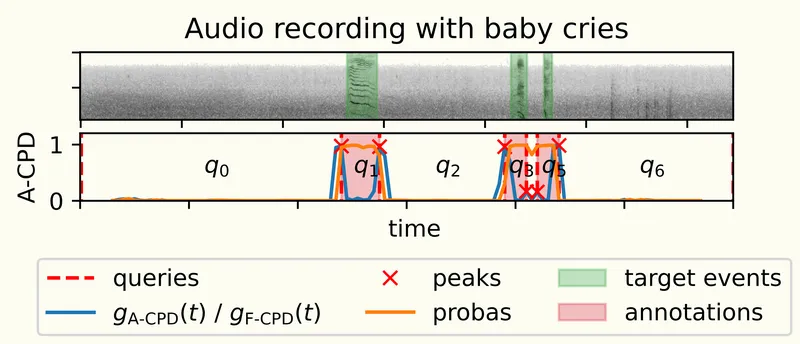Efficient and Precise Sound Event Annotation
Annotating bioacoustic data is a time-consuming and labor-intensive task. We have therefore developed a method for efficient and precise annotation of local structures in data, which we call adaptive change point detection (A-CPD). The method can be used to annotate bioacoustic events and has been evaluated on a dataset of animal vocalizations with promising results.

The idea is quite simple. We use a change point detection algorithm to find the boundaries of events in the data. The algorithm is adapted to the sound events of interest by updating the change point detection algorithm with each new annotation. This means that the boundary estimates are improved over time, which allows us to annotate events with high precision and efficiency. This is crucial for training and evaluating machine listening models.
Read more about efficient and precise sound event annotation in (Martinsson et al., 2024) and (Martinsson, 2024).
In chapter 1 of (Martinsson, 2024), I provide more details on what it means to annotate local structures in data (e.g., a sound event in audio data) and how this can be done by only providing weak labels. A weak label describes only the class of a structure, and not the boundaries of the structure. In chapter 2 of (Martinsson, 2024), the A-CPD method is put into a broader context and machine guided annotation is discussed in more detail.
References
- Martinsson, John and Mogren, Olof and Sandsten, Maria and Virtanen, Tuomas (2024). From Weak to Strong Sound Event Labels using Adaptive Change-Point Detection and Active Learning. In 2024 32nd European Signal Processing Conference (EUSIPCO) (pp. 902-906). . DOI: 10.23919/EUSIPCO63174.2024.10715098.
- Martinsson, John (2024). Efficient and precise annotation of local structures in data. Centre for Mathematical Sciences, Lund University. ISBN: 978-91-8104-199-6.







